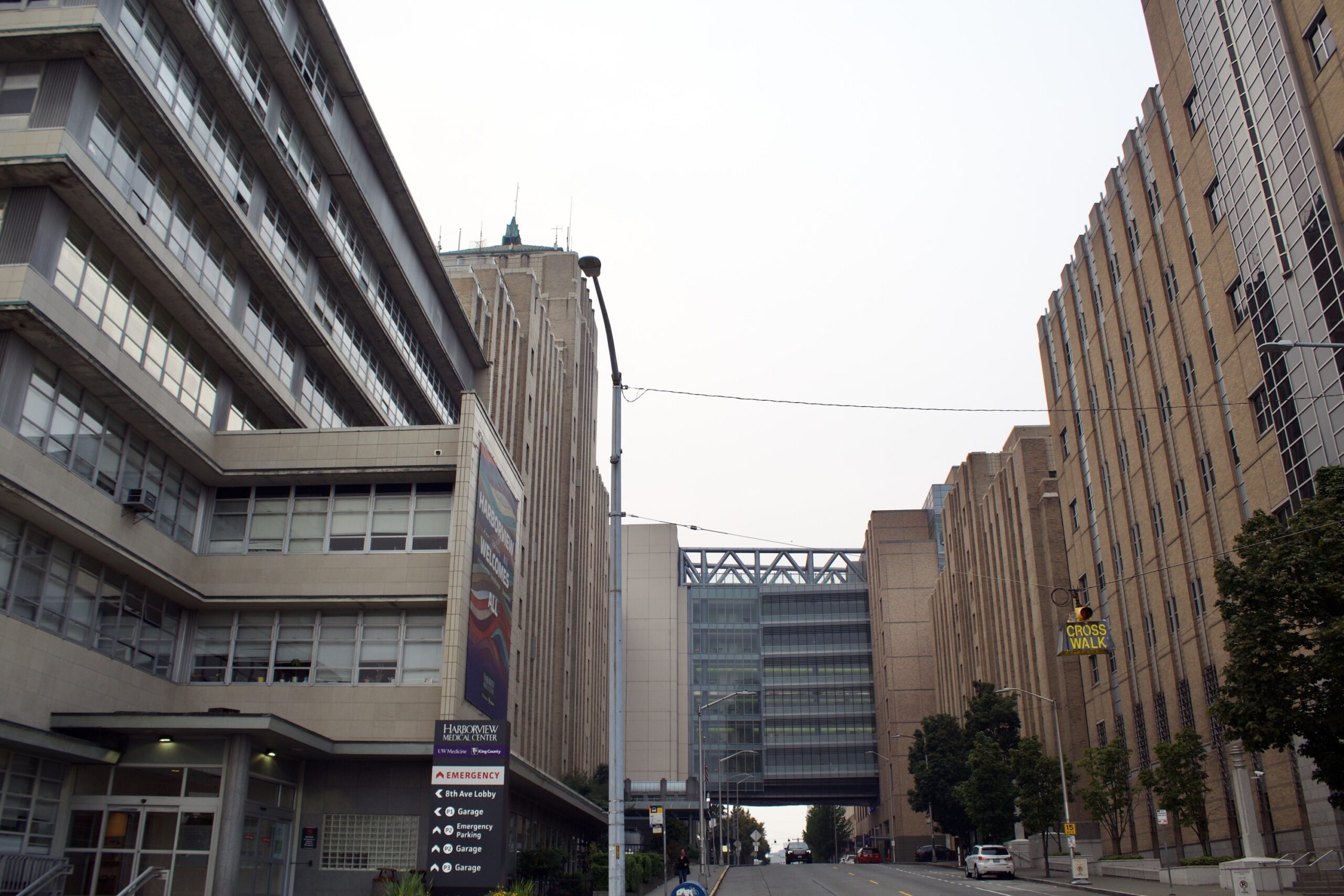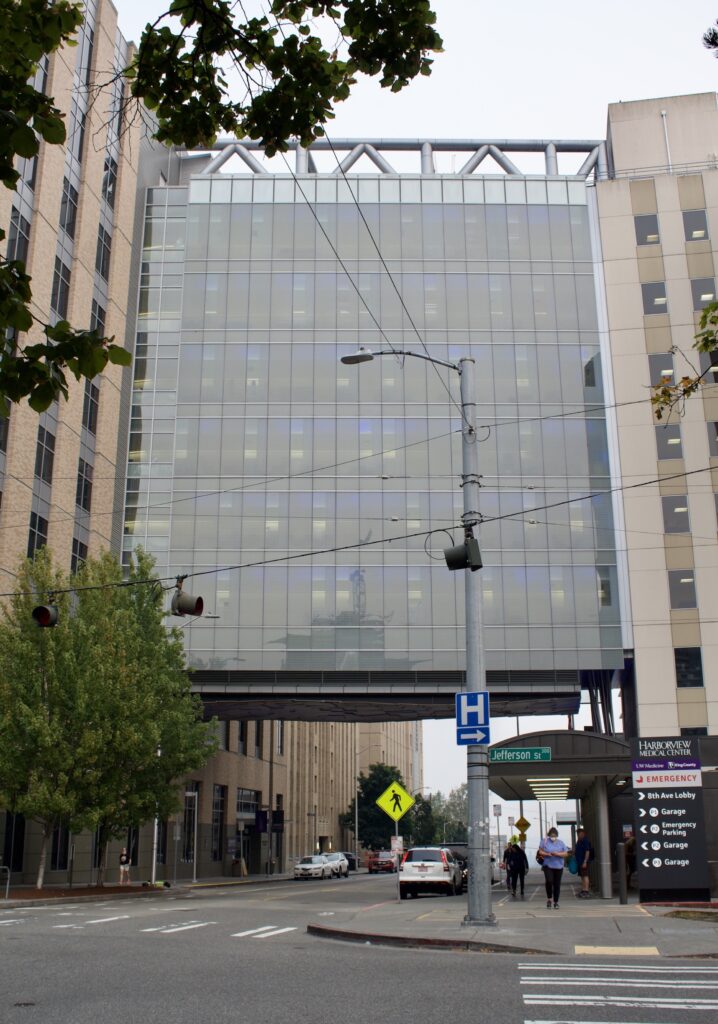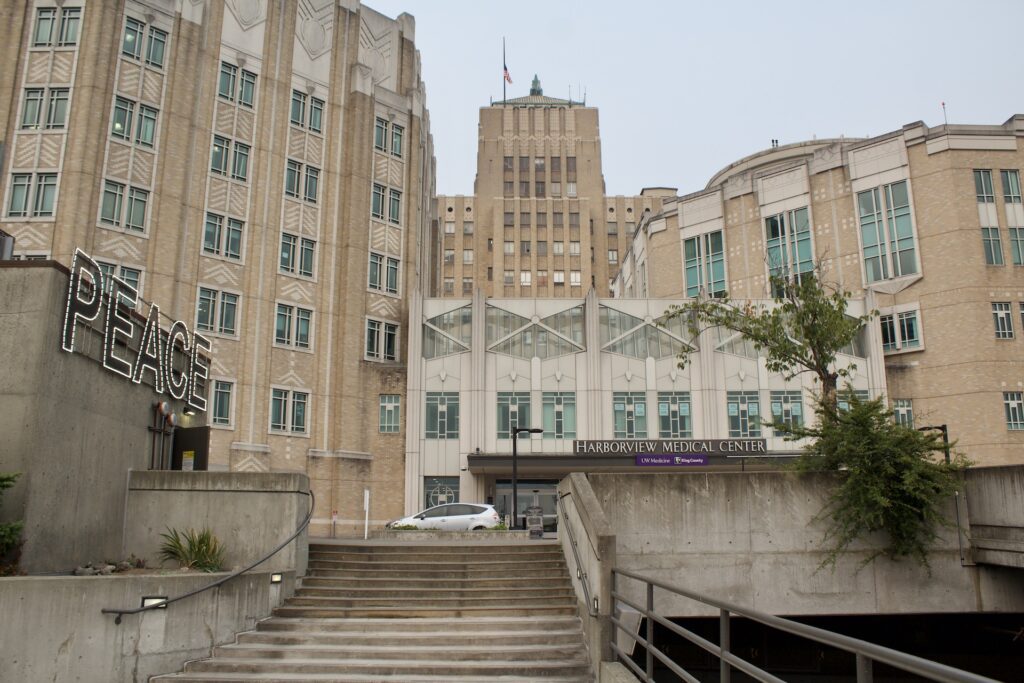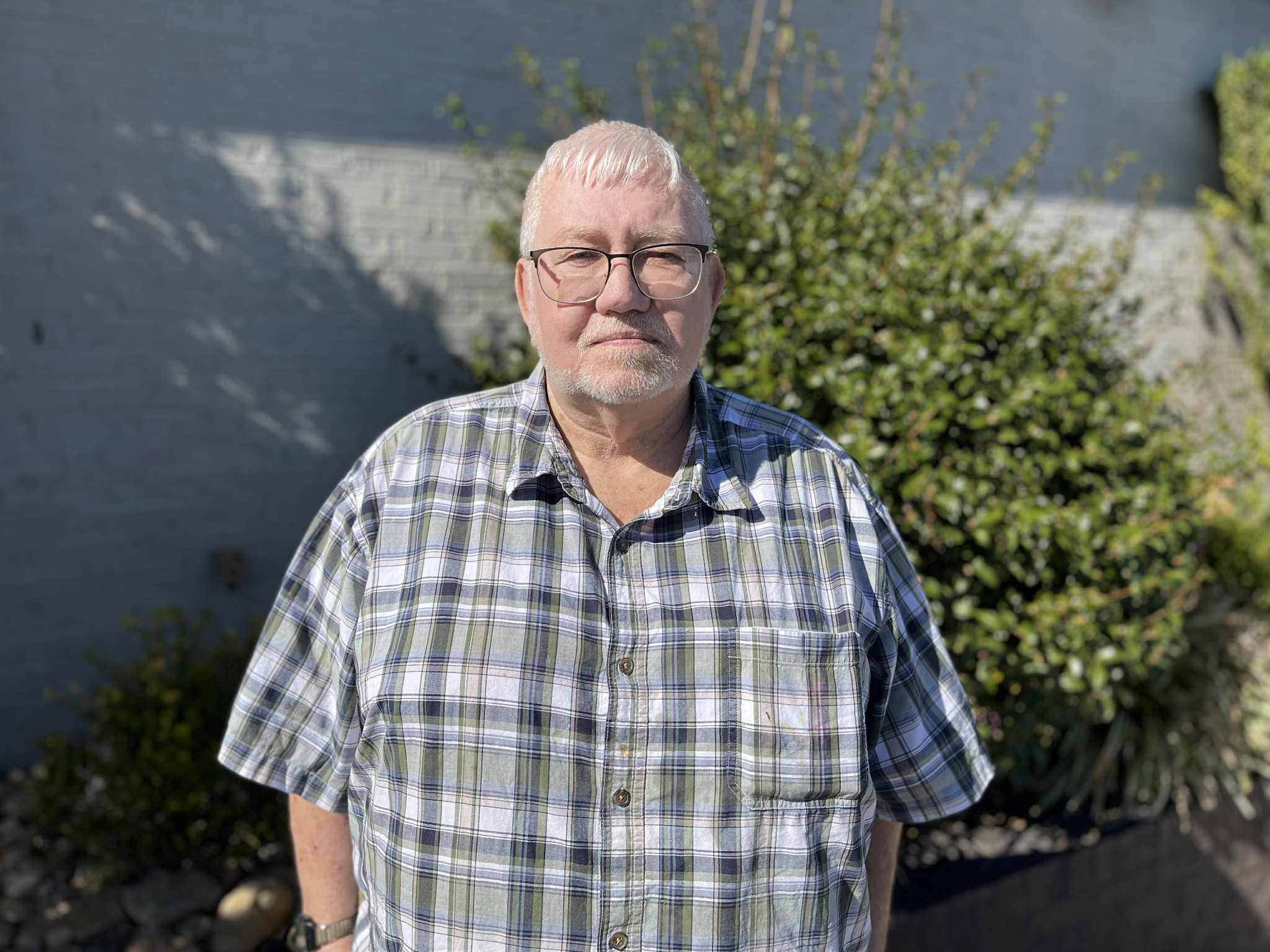(SEATTLE) — Harborview Medical Center is a 1 million-square-foot collection of buildings that have been pieced together over the last 90 years, now spanning two blocks on First Hill. The original building, which is now just one of many wings, is grand for a county hospital, boasting a 15-story art-deco structure and a five-story tower topped with a golden-tiled pyramid roof and green copper flame.
Harborview Medical Center is known for its prioritization of indigent patients — a focus that can be traced back to its founding in the late 1800s. Today, their mission statement states that Harborview prioritizes care for the non-English speaking, uninsured, incarcerated, victims of domestic violence, sexual assault, mental illness, and substance abuse.
The importance of Harborview to these communities is reflected in the steadily increasing patient population over the decades. But, what results is a repeated need for expansions and renovations as the facility inevitably breaches capacity. Nonetheless, Harborview has managed to keep up with its growing demographic due largely to voter-approved bonds.
In 1877, along the banks of the Duwamish River in South Seattle, King County Commissioners built a six-bed hospital named King County Poor Farm to care for the county poor, according to Josephine Ensign, a health policy professor at the University of Washington. Commissioners hired three nuns from the Sisters of Charity of the House of Providence and within five years, their annual patient population increased from 30 to almost 200, according to Ensign.
A larger facility was built in 1890, but by the 1920s it was again over capacity. Despite the extra rooms, beds lined the corridors as more than 400 patients squeezed into the 225-bed facility, according to City Historic Preservation Officer Karen Gordon in a 2009 Seattle Landmark Preservation Board report. “The need for a new hospital was critical,” Gordon wrote.
King County residents recognized this critical need when in 1928 they approved a $2.75 million bond issue to build a new 500-bed hospital “for care of the indigent, sick, injured and maternity cases,” Gordon said in the report.
Harborview Hospital — named for its view of the Elliott Bay harbor from First Hill — opened its doors in 1931 and the beds were immediately filled. Only two weeks after opening, the hospital’s first superintendent Dr. Willis Corson told The Seattle Times, “The charity cases keep us filled to capacity.”
According to Gordon’s report, “between 1936 and 1939, outpatient visits increased from 11,100 a month to 16,500, in a facility built for 75 patients a day.”

From the intersection of 9th and Alder one can see the East Clinic (1955), the Center Tower (1931), the East Hospital (1972), the skybridge (2008), the Norm Maleng Building (2005), and the Research and Training Building (1999). [Credit: Josie Fenske]
Showing their support for Harborview’s mission once again, King County voters approved another $2.75 million bond issue in 1948. Completed in 1955, the expansion included a newer, sleeker south wing that housed emergency and surgery facilities and outpatient clinics.
The new facilities were utilized to full capacity until, in less than a decade, the increasing patient population hindered the hospital staff’s ability to care for their patients. Dr. Robert Petersdorf told Seattle Magazine in 1966, “If [Harborview] Hospital isn’t drastically improved, we’re going to have a glorified pesthouse on our hands,” referring to the infectious disease hospitals of those days.
A ballot measure was approved in 1966 for a $15 million bond issue that would be used to “renovate and remodel and provide additional new equipment for Harborview,” according to a 1966 King County audit report. With the approved funds, in addition to state and government grants, the five-story north wing was completed — which included a new emergency department — renovations were made to the center wing, a parking garage was added, and a two-story addition was built for the King County Medical Examiner.
In 1967, the University of Washington took over management of Harborview Hospital, and in 1969 the facility was renamed Harborview Medical Center.
A $19.5 million bond was approved in 1976 “for the purpose of renovating, modernizing and equipping Harborview Medical Center to meet new life safety codes,” according to a 1977 King County audit report.
In 1987, voters approved what would be Harborview’s largest expansion yet, according to UW News, nearly doubling the size of the aging hospital. A major aspect of the $131 million project was the construction of Harborview’s trauma center.
According to Dougherty, in the 1980s there was an increasing need to treat the critically injured. So, in 1993 Harborview Medical Center was designated as the only level I trauma center to serve Washington, Alaska, Idaho, and Montana. In 1997, the Washington State Trauma Care Fund was established to “assist in covering the costs of medically indigent patients who were severely injured.”
According to Department of Health records, since 2016 Harborview has received on average 42% of the annual $3.5 million trauma care allocations for the 70 to 80 eligible hospitals in Washington. Harborview has also ranked highest in charity care spending of all Washington hospitals for the past five years, according to hospital financial records, spending over $88 million in 2021.
By 2000, annual inpatient admissions had increased to nearly 17,000, according to hospital utilization records, and the facility was once again in need of upgrades. So, voters approved a $193 million bond dedicated mostly to seismic retrofitting. According to a 2000 Seattle Times article, “Structural engineers said Harborview Hall and the East Clinic could collapse during a moderate earthquake.”

The six-story sky bridge, built in 2008, is suspended above Ninth Ave between the east wing and Norm Maleng Building. [Credit: Josie Fenske]
For the next six years, annual admissions increased until peaking in 2011 at almost 20,000, after which they began a decline that continues as of 2021. Outpatient visits, however, increased through 2020, and with the onset of the COVID-19 virus, Harborview was once again outdated and overcrowded.
In November 2020, King County voters approved a $1.74 billion bond for a Harborview expansion that, according to the Seattle Times, would include a $952 million medical tower with single-bed rooms, an emergency department, and a building dedicated to behavioral health. The project would also increase the number of respite beds — a place for homeless people to recover after hospital stays — from 34 to 150.
“The $1.74 billion bond is paid for by King County property owners,” says Gregg. According to a King County Bond Program report, the bond will cost the average homeowner about $75 per year.
To the patients who depend on Harborview for care, Gregg said, “there are no increased costs as a result of the voter-approved bond funding.”


